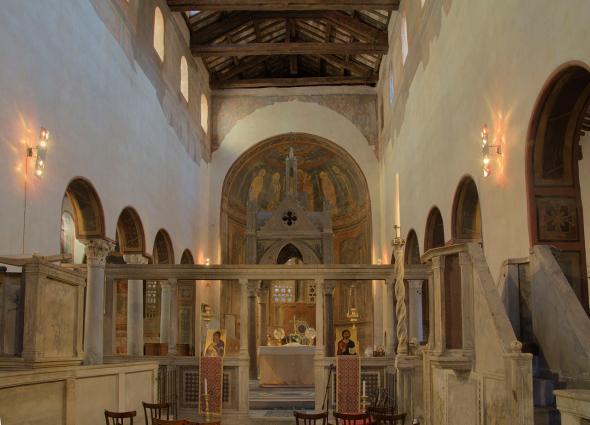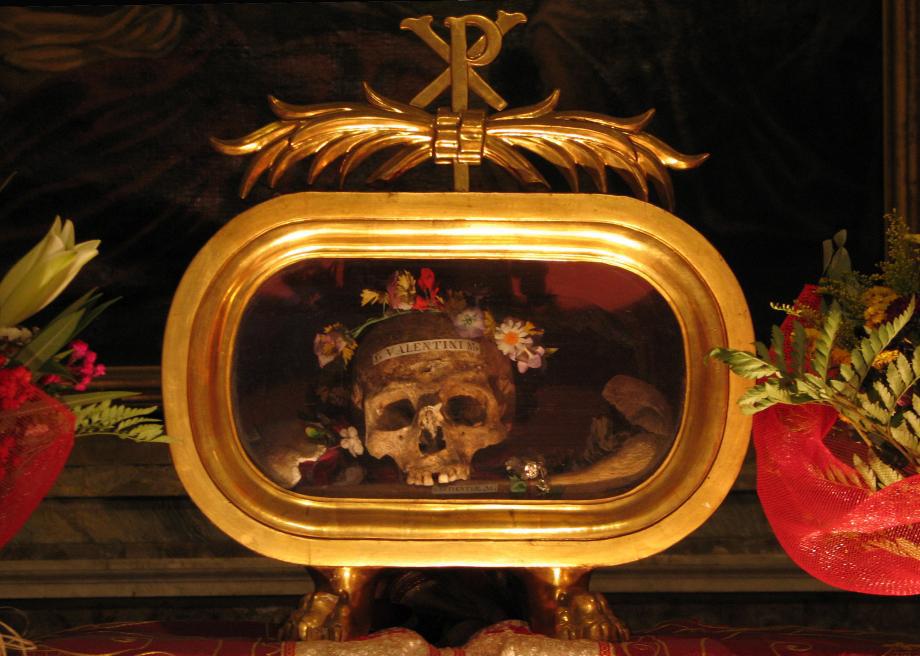Each day, Slate features an article from Atlas Obscura, the website dedicated to the world’s hidden wonders. You can follow Atlas Obscura on Facebook or on Twitter.
A skull resides in a glass reliquary in a small basilica in Rome, surrounded by flowers. Lettering painted across the forehead identify the owner as none other than of the patron saint of lovers, St. Valentine.
Knowing just exactly whose skull it is, though, is complicated. First off, there was more than one Catholic saint known as St. Valentine. Then there’s the approximately 1,500 years between those martyr’s deaths and the enthusiastic distribution and labeling of bodies in the Victorian era. Finally, and most troubling, there is the fact that no less than 10 places claim to house the relics, all around the world.
Little is really known of the real man (or men) behind the myth. What is known (more or less) is that at least two men by the name of Valentine (Valentinus) were known in Italy and died in the late 3rd century, and a third Valentine was located in North Africa around the same time. The two Italians were buried along Via Flaminia. As a saint, Valentine first gained real notoriety in 496 when Pope Gelasius I made Feb. 14 originally part of the Roman festival of Lupercalia, a feast day dedicated to St. Valentine. The stories of the different men seem to have merged into one over time, with most of the mythology about Valentine being a patron of lovers, helping early Christian couples to marry in secret, only dating to the 14th century and the writings of Geoffrey Chaucer.

The church itself is very old, standing on the site of an ancient Roman temple dating to the second century B.C. Most of what you see today dates to the eighth and 12th centuries, including the crypt located beneath the altar.
The skull can be found in the side altar on the left side of the church. While you are at the Basilica of Santa Maria, stop by the portico to visit with the famous Bocca della Verità (mouth of truth).
Written by Atlas Obscura contributor Annetta Black
If you liked this, you’ll probably enjoy Atlas Obscura’s New York Times best-selling book, which collects more than 700 of the world’s strangest and most amazing places Atlas Obscura: An Explorer’s Guide to the World’s Hidden Wonders.
